For many families, the sweltering summer heat is always a nightmare. At high temperatures, your walls will easily absorb heat and warm up, then radiate stuffy waves of heat inside your home, causing discomfort.
Therefore, it is imperative to find ways to cool down your walls. If you want to create a cooler and more comfortable living space during the hot season, let’s explore the following effective solutions to combat heat for your walls.
1. Reasons Why Your House Gets Uncomfortably Warm
Your House Faces West
The west-facing orientation of your house means it will be exposed to direct sunlight during the hottest part of the day, from noon to late afternoon. However, due to unfavorable geographical conditions, many families have no choice but to build their homes facing west.
As a result, the walls and roof of your house will absorb a significant amount of heat and radiate it inside. Even after the sun sets, it takes a long time for the walls and roof to release all the absorbed heat. Consequently, the indoor air remains warm even at night.
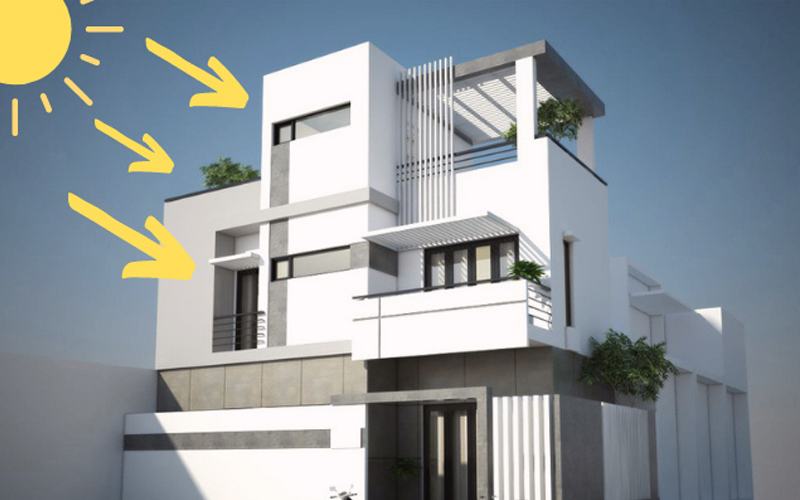 West-facing houses bear the brunt of the afternoon sun.
West-facing houses bear the brunt of the afternoon sun.
Building Materials That Absorb Heat
Houses with roofs made of galvanized iron sheets can absorb temperatures ranging from 40°C to 60°C during hot days. Additionally, concrete roofs are also prone to absorbing heat from the sun but are difficult to cool down, resulting in an uncomfortably warm indoor environment.
 Galvanized iron roofs can absorb extreme heat.
Galvanized iron roofs can absorb extreme heat.
Poor Ventilation System
Every time you use the stove or microwave for cooking, hot air is generated and lingers inside your home, warming the walls from within. If you lack proper ventilation, such as exhaust fans, open windows, or air filtration systems, it becomes challenging to dissipate this uncomfortable heat.
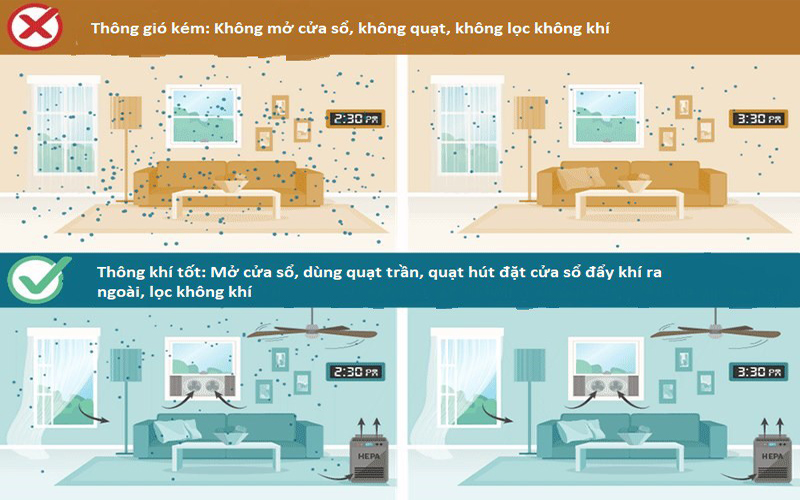 Houses without proper ventilation systems struggle to stay cool.
Houses without proper ventilation systems struggle to stay cool.
Excessive Heat-Generating Appliances and Devices
Certain appliances and devices generate a significant amount of heat during operation, including ovens, microwaves, irons, refrigerators, and kettles. Aside from making the walls hotter, they also tend to accumulate dust and negatively impact indoor air quality if not regularly cleaned.
 Heat-generating appliances can make your house warmer.
Heat-generating appliances can make your house warmer.
2. Effective Ways to Combat Heat for Your Walls
Paint Walls and Roofs with Light-Colored Paint
You can apply the basic principle that light colors reflect heat while dark colors absorb it when choosing paint colors to help cool down your walls effectively. By painting your walls with light colors, you can achieve indoor temperatures that are 3°C to 5°C lower compared to outdoors. Additionally, consider using heat-reflective paints for your roof as well.
This method is environmentally friendly and does not disrupt daily life. Some recommended light shades include cream, light gray, light blue, light green, and light yellow.
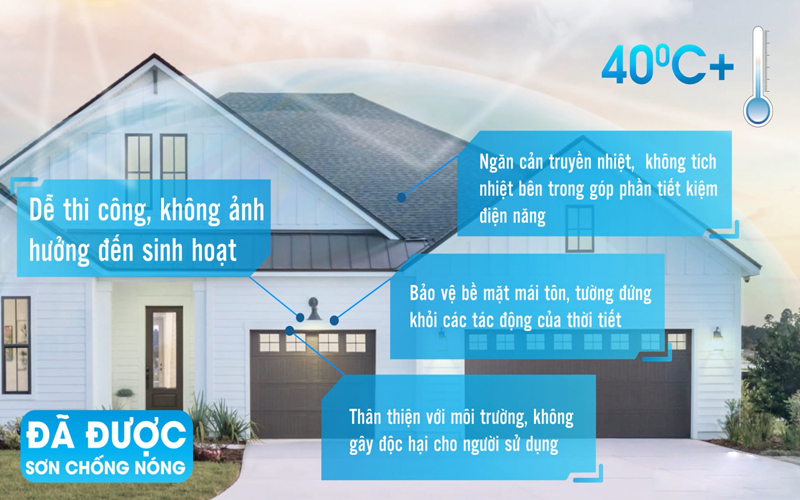 Light-colored paint offers notable advantages for cooling.
Light-colored paint offers notable advantages for cooling.
Use Heat-Resistant Wall Panels
This method is favored by many as wall panels come in a variety of designs and materials. They not only help reduce heat absorption but also enhance the aesthetic appeal of your home.
Some popular choices for wall panels include wooden panels and brick panels.
 Wooden panels not only combat heat but also enhance the beauty of your home.
Wooden panels not only combat heat but also enhance the beauty of your home.
Use Heat Insulation Stickers
While wall panels address heat from the outside, heat insulation stickers are an effective indoor solution. The market offers various options, such as foam stickers, wallpaper, and heat-resistant fabric. This method is widely popular due to its low cost and high aesthetic value.
In addition to heat insulation, these stickers also provide benefits like soundproofing, fire resistance, and roof leak prevention.
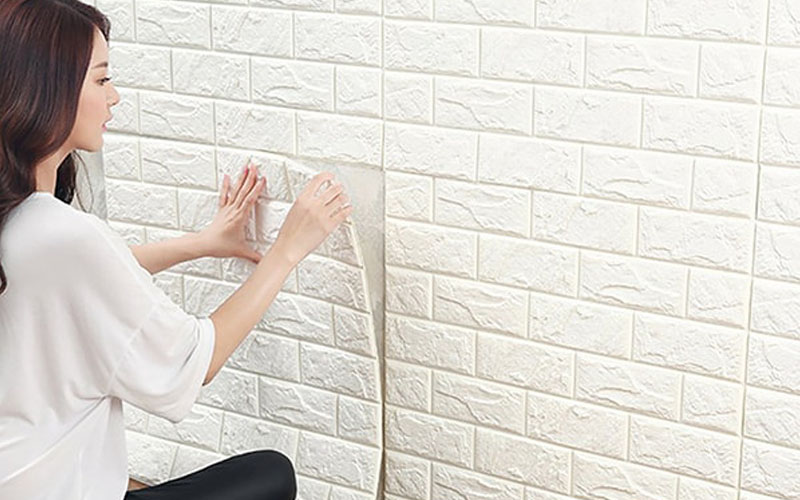 Heat insulation stickers are a versatile solution.
Heat insulation stickers are a versatile solution.
Use Heat-Resistant Metal Roofing
Heat-resistant metal roofing, or cool roofing, is made of three layers: a colored galvanized steel layer, a polyurethane (PU) insulation layer, and a polypropylene (PP) lining.
Thanks to its unique structure, cool roofing not only minimizes heat absorption but also provides soundproofing, leak prevention, and aesthetic benefits.
However, this method requires considerable time and effort for installation and comes at a higher cost.
 Heat-resistant metal roofing offers multiple advantages.
Heat-resistant metal roofing offers multiple advantages.
Use Cool Bricks
Cool bricks are made with a core of PIR (Polyisocyanurate Foam) and two layers of cement on both sides. They come in various colors and thicknesses ranging from 20 to 50 mm, offering flexibility in choice.
In addition to their heat-resistant properties, cool bricks also provide excellent waterproofing, moisture resistance, and fire resistance.
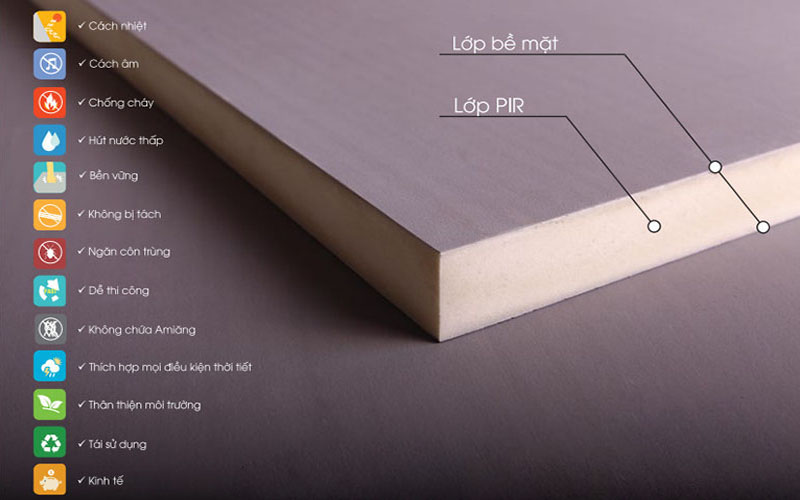 Cool bricks offer multiple benefits beyond heat resistance.
Cool bricks offer multiple benefits beyond heat resistance.
Use Heat-Insulating Gypsum
Heat-insulating gypsum is considered a modern and intelligent solution for both ceilings and walls.
By using this material, you can expect benefits such as extended lifespan for your building, easy transportation of the raw material, a diverse range of colors, and flexibility in cutting and shaping.
However, this system demands high technical expertise for proper installation, so it is crucial to engage skilled and experienced craftsmen.
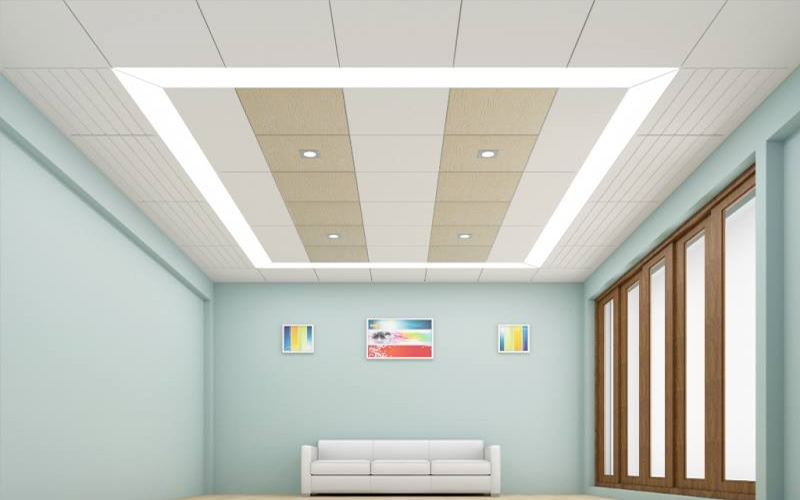 Heat-insulating gypsum is a versatile and effective solution.
Heat-insulating gypsum is a versatile and effective solution.
3. Creating a Cooler Outdoor Space
In addition to the measures mentioned above, it is equally important to create a comfortable outdoor space.
Plant Trees
Planting trees to shade the west-facing side of your house and create a cooler environment is an effective solution. If your front yard is not too spacious, consider choosing climbing plants such as ivy, clematis, or passionflower.
On the other hand, if you have a larger area, opt for trees with dense and broad canopies. Aside from blocking direct sunlight, trees also purify the air and add a touch of greenery to your living space.
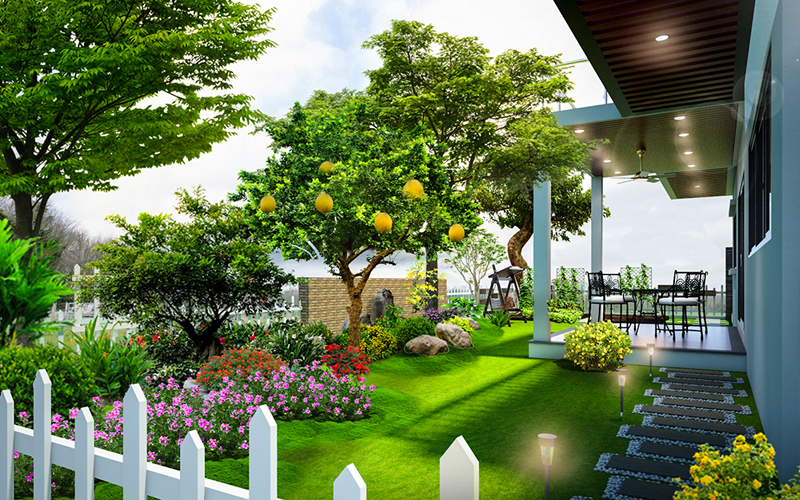 Planting trees is a natural way to cool down your outdoor space.
Planting trees is a natural way to cool down your outdoor space.
Use Sunshades and Roller Blinds
This is the most common manual method currently in use. While it may not be the most effective heat-combating solution, sunshades and roller blinds offer affordable prices, a wide range of designs, and easy installation.
 Sunshades and roller blinds are a cost-effective solution.
Sunshades and roller blinds are a cost-effective solution.
Utilize Loggias
Loggias are an effective way to combat heat if you plan to build a tube house or a steel-framed house. You can take advantage of the loggia space to place potted plants or flowers, adding a touch of freshness to your home.
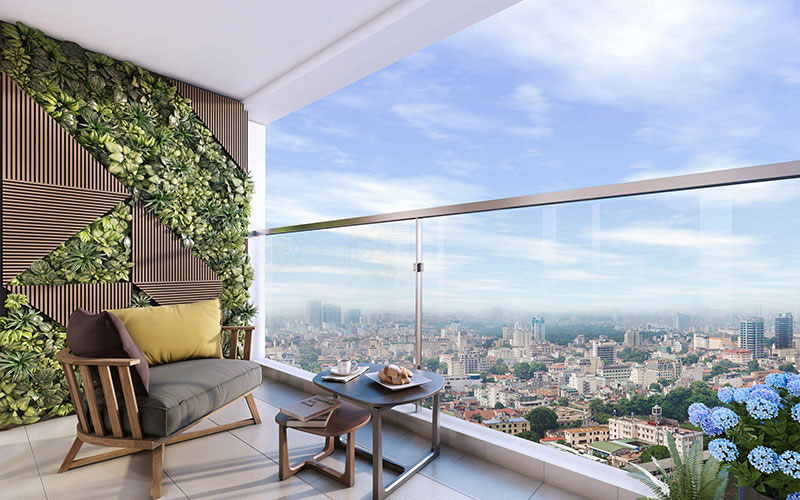 Loggias provide a shaded and cooler space.
Loggias provide a shaded and cooler space.
The above are our suggestions for effective solutions to combat heat for your walls. We hope you find these ideas helpful in improving the comfort of your living space.
Tips for Keeping Cool on a Hot Summer Day
As extreme weather patterns become increasingly common, many are struggling to find ways to cope. With temperatures in our country rising and cooling far beyond what used to be considered normal for the season, winter often feels like spring and summer can be oppressive and sweltering. How can we prepare for and manage the drastic shifts in climate?
Ways to Beat the Summer Heat: 10 Cool Strategies
 Summer Heat: 10 Cool Strategies’>
Summer Heat: 10 Cool Strategies’>With temperatures soaring to over 40 degrees Celsius in some parts of the northern region, this summer heatwave is causing considerable discomfort and inconvenience. The roads are practically melting in some areas. To keep yourself safe and bearable, here are some tips on how to cope during these hot days.
































